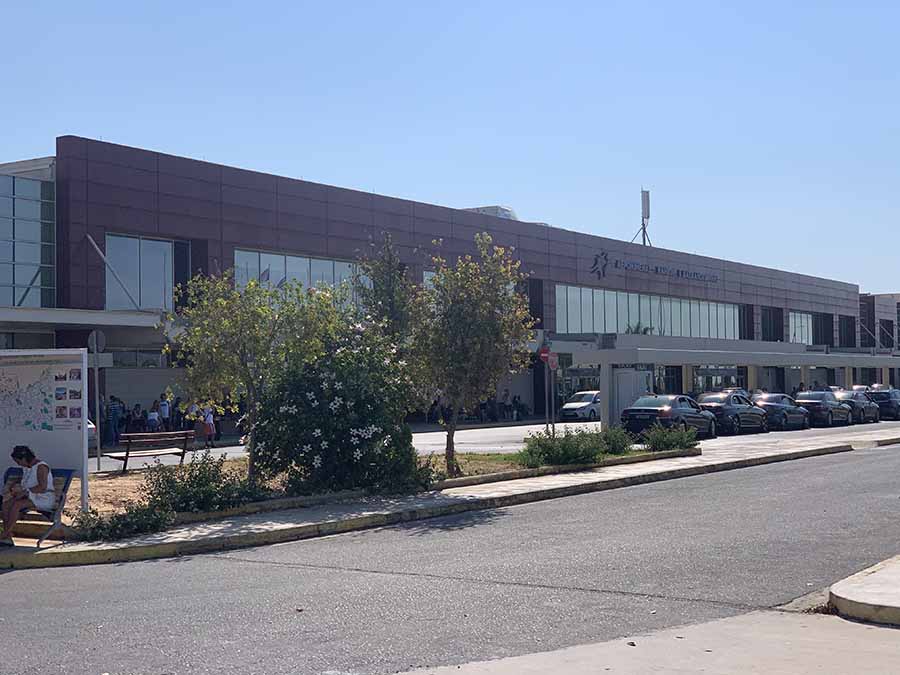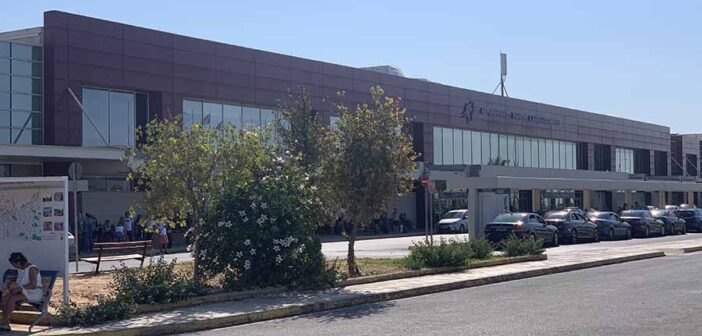
Chania International Airport (CHQ), known as Ioannis Daskalogiannis or CHQ, serves as Crete’s second-busiest airport, handling around 3 million passengers annually with a single-terminal setup. Located 14 kilometres east of Chania’s city centre on the Akrotiri Peninsula, it connects travellers to over 50 destinations across Europe and the Middle East, with airlines like Aegean Airlines, Ryanair, and easyJet operating regularly. Its modern terminal, expanded in 2016, provides a straightforward experience for those exploring western Crete’s beaches and historic sites.
Accessing the airport is convenient, with several transport options linking to Chania. The KTEL public bus runs every 30 minutes, taking about 25 minutes to reach the city centre for €2.50, with tickets available from the driver or online.
Taxis, stationed outside the terminal, offer a 20-minute ride to Chania for €25 to €30, with fares potentially higher for luggage. Private shuttles, often arranged by hotels or travel agencies, provide direct transfers to nearby resorts like Rethymnon, costing €15 to €50. Drivers can use the 350-space car park, free for the first 20 minutes and €3 per day after 15 days, with a shuttle to a cheaper lot 100 metres away. Car rental agencies, including Avis and Hertz, are in the arrivals area. Passengers should arrive two hours before domestic flights and three hours before international ones to account for check-in and security.
The airport’s single-terminal layout is easy to navigate, with arrivals and baggage claim on the ground floor and departures, including 12 check-in desks and 10 gates, on the first floor, accessible by escalator or lift. The terminal splits into Schengen and non-Schengen zones, with clear signage keeping walking times under five minutes. Peak summer months, particularly April to October, can lead to overcrowding at security and passport control, with waits up to 40 minutes due to high tourist volumes or staffing shortages. Baggage claim delays, sometimes caused by limited carousels, are another concern, so passengers should check updates via the airport’s website or Flightradar24. Recent social media posts note chaotic boarding processes and occasional understaffing, particularly for non-Schengen flights.
Dining and retail options are modest but sufficient, mostly located on the first floor. Flocafe, Forno Luca, and Everest offer snacks, Italian dishes, and Greek specialities, with a coffee costing around €2.50. Hellenic Duty-Free shops provide souvenirs, perfumes, and local products, but the selection is limited compared to larger hubs. A mini-market and vending machines are available, though prices are higher than in Chania. The Prima Vista Lounge, accessible for €28 via Priority Pass, offers Wi-Fi, snacks, and seating but is described as small. Crowded dining areas during peak times suggest eating before security.
Facilities include free unlimited Wi-Fi via the Fraport-Free network, though connections may slow during busy periods. Charging stations and power outlets are available in waiting areas, but seating is often rigid. Accessibility is well-supported, with ramps, lifts, wheelchairs, and a dedicated autism assistance programme, bookable 48 hours in advance. A nursing room, currency exchange, ATMs, and a first-aid station are on the ground floor, but no luggage storage is available. A water fountain past security allows bottle refills. Nearby hotels, like the Royal Sun, 3 kilometres away, offer shuttle services. Smoking is restricted to outdoor areas.
On-time performance is generally reliable, with the airport’s smaller scale minimising congestion. Delays are often due to airline-specific issues, such as equipment problems, or weather conditions like strong winds. Recent social media posts mention delays from runway obstructions or immigration system failures, particularly in summer. Passengers can monitor updates via in-terminal displays. As a seasonal hub, Chania offers limited connections, primarily through Athens or Thessaloniki, with minimum transfer times of 45 minutes. The single terminal simplifies transfers, but non-Schengen passengers may face delays at passport control. Those on separate tickets should verify luggage policies.
Chania Airport’s compact design, accessible transport, and essential amenities make it a practical choice for travellers. Ongoing upgrades, including expanded security zones and parking, aim to improve comfort. While summer crowds, limited air-conditioning, and basic facilities pose challenges, the airport’s services ensure a pleasant journey to Crete’s western coast.
Ryanair
Ryanair operates flights to Dublin on Mondays, Tuesdays, and Fridays from the main terminal, with check-in desks typically in the check-in area (desks 1–10). Exact desk numbers are displayed on airport screens.
Departure Gates: Flights to Ireland (Dublin) typically depart from Schengen gates (gates 1–8). Specific gates are confirmed on departure boards.




